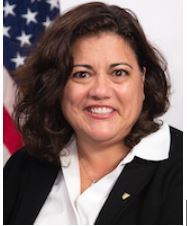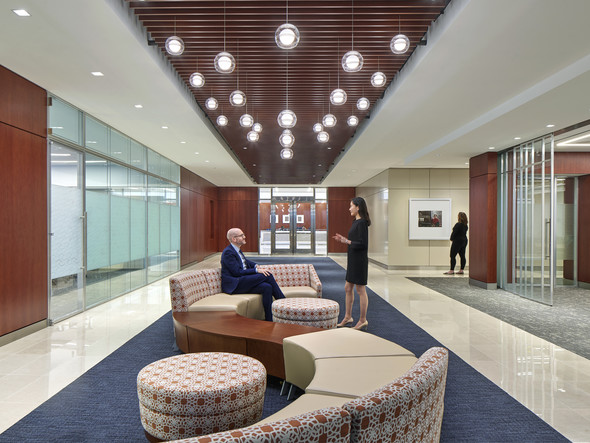
“Our dilemma is that we hate change and love it at the same time; what we really want is for things to remain the same but get better.”
– Sydney Harris, Chicago Daily Times
This is a revolutionary time for the entire civil service, but particularly for those of us who are undertaking solutions that support not only our agency’s mission, but also a more flexible and distributed workforce. And perhaps there is no greater sign of this revolution than a Chief Human Capital Officer introducing a real estate newsletter. Leading change requires human resources to sit at the table with our technology, facilities, communications and other vital partners, and I believe GSA’s cross-disciplinary model provides a template for success that can be replicated throughout the government.
Change only follows challenges to traditional thinking and conventional wisdom. Our experience at GSA is that having all personnel reporting to a physical office doesn’t equate to better productivity or innovation. As a result, all of GSA is working together to reimagine how we work, create more functional and attractive collaboration spaces, and inspire employees to come into a government building. Our path forward includes a cadre of business lines (the Public Buildings and Federal Acquisition Services) and stakeholder groups (information technology, human resources, and administrative services) meeting regularly to discuss each group’s role in rethinking our workspaces, leveraging technology, and listening to employees.
It is also my privilege to represent GSA on the Chief Human Capital Officers Council. Through this lens, it is abundantly clear that the rest of the government is looking to GSA to demonstrate better ways to work that incorporate key Administration priorities such as sustainability, inclusivity, and access.
This type of change is not for the faint of heart, but GSA has a history of innovation and a culture of excellence that fosters bold change. For us, it began by clarifying our mindset that we are one agency with one mission, and that each office and every employee is critical to our success. We also defy the notion that the government can’t or won’t change with the times; we are willing to step up and show how we can transform our buildings, invest in technology, increase our use of clean energy, and focus on a civil service that is welcoming to all employees and customers. We look forward to sharing our successes and lessons learned with all of you. And I am confident that we can break through silos and revolutionize federal civil service, by focusing more on service delivery excellence than on counting heads at desks.
We have a lot of work ahead, and we may not get everything right on the first try. Innovation is hard work but also worth it!
There is nothing permanent except change.” -Heraclitus
This is our time to seize change to create a stronger, more dynamic federal government.
Traci DiMartini
Chief Human Capital officer
U.S. General Services Administration
|
 Seven Disparate Spaces in One Metro Area
A decade ago, the U.S. Agency for International Development’s (USAID’s) 4,000 headquarters personnel were spread across seven locations (including six leases, one of which was a warehouse) in Washington, DC, and Virginia. Beyond the geographic separation, USAID’s flagship space at the Ronald Reagan Building was showing its age and making the wrong first impression.
“The unrenovated parts of our offices looked just like they did in 1995,” recalled Dr. Tony Bennett, Chief of the Headquarters Management Division at USAID during this summer’s 2022 PBS Customer Forum. “We would have applicants interviewing in these spaces and they would see the old fabric cubicles…and worn-out carpets.” But Dr. Bennett and his USAID colleagues saw an opportunity in this flawed space.
While the condition of the office space eased initial buy-in for a renovation, Dr. Bennett and his team saw it as an impetus for additional change. “We wanted to get to a two-headquarter solution and improve our utilization of space,” he explained. “We wanted to fully modernize our space, to make sure our offices were state-of-the-art—including IT and security. We also put an emphasis on ergonomics and wellness. We wanted to ensure USAID’s offices were modern and relevant for years to come.”
GSA as a “Model for Change”
USAID officials collaborated with GSA workplace professionals to get the process started, first by touring GSA’s headquarters building and then embarking on a project to pilot new concepts.
USAID chose to renovate 27,000 square feet on the seventh floor of its Reagan space, according to GSA’s total workplace design standards in place at the time. The modern, open office design included a lobby area, offices, workstations, and a tech cafe.
While there was organizational buy-in for USAID to renovate its space, the pilot showed senior leadership how future renovated spaces should function. “Our biggest hurdle was to convince people with 200-square-foot offices and private conference rooms to buy into this vision,” Dr. Bennett recalled. “Seeing the open-office pilot helped secure their approval. We have to thank GSA for being that model of change and helping us convince the people that this is the path forward.”
Pilot Project Spurs Additional Renovation
The pilot was so well received that USAID soon renovated its remaining space on the seventh floor to include a state-of-the-art operations center, SCIF, and other classified spaces with the open plan.
In 2015, USAID was ready to commit fully to the two-headquarter solution: consolidating its seven DC–area locations into two, and designing both to accommodate current and future mission needs. Dr. Bennett and his team codified USAID’s plans in a real estate framework known as the Washington Real Estate Strategy. Part of this strategy involved directly engaging office personnel through a team called Space Matters. For the past seven years, this group has worked with USAID’s facilities team.
Additionally, GSA maintained strong lines of communication with USAID as its strategy moved forward. “In the early phases of the project, our goal was to develop a solution-based, proactive culture across all stakeholders,” said Nadiyah Scarlett, Capital Projects Division Director in the Office of Design and Construction, GSA National Capital Region, and one of several GSA workplace personnel who managed USAID ‘s consolidation. This collaboration, Scarlett explained, facilitated decision making and kept the project on track.
As consolidation planning and design continued, the GSA team established weekly progress meetings with key stakeholders that included USAID’s high-level leadership, representatives from impacted groups such as information technology and security, and contractors. “These collaborative customer meetings are very helpful,” Scarlett said. “I believe they have been integral to the success of the project.”
|